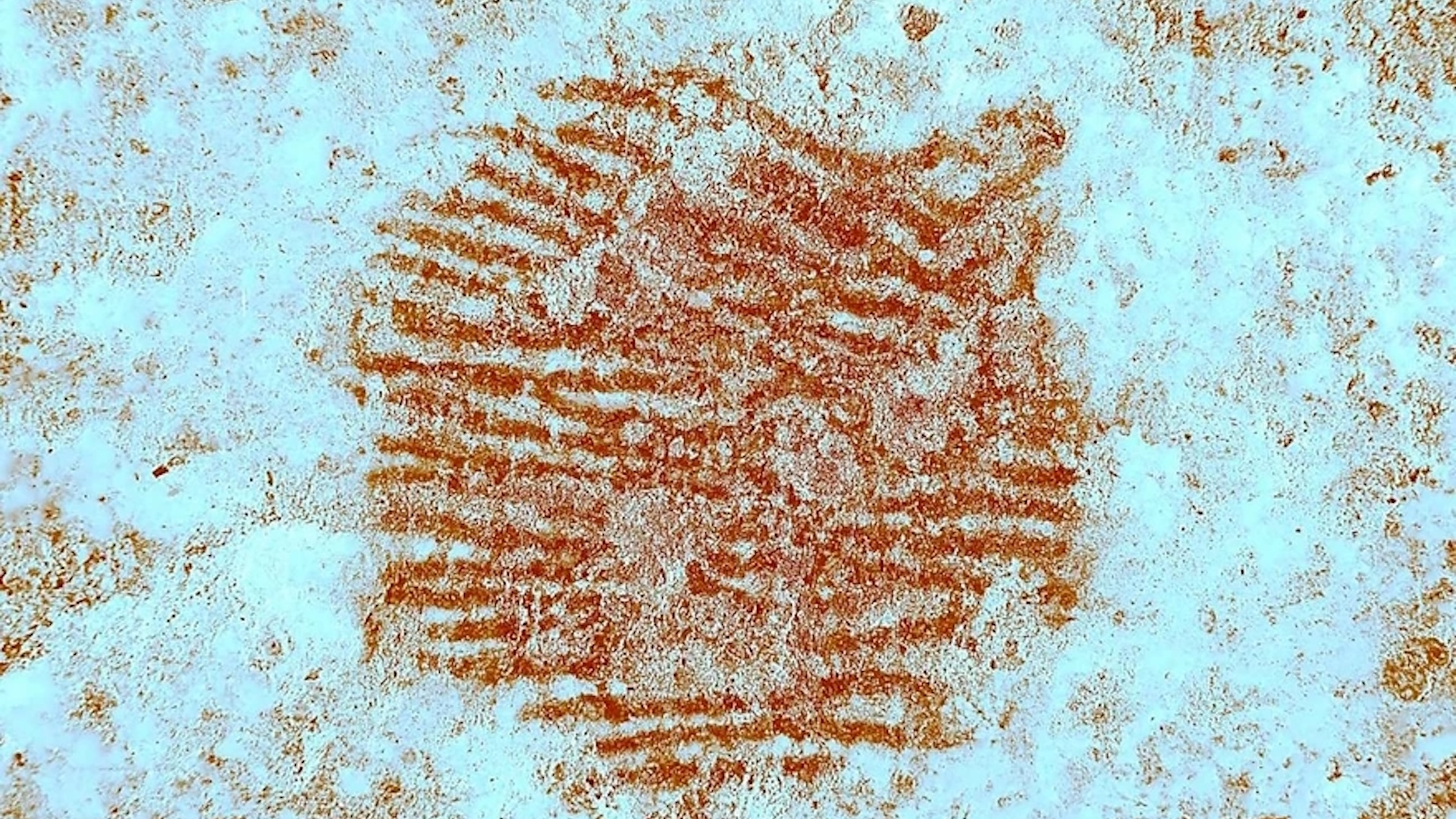A red dot on a face-shaped rock in Spain may be setting records in more ways than one. At roughly 43,000 years old, the dot may be the oldest human fingerprint on record and also one of the earliest symbolic objects ever found in Europe.
The fingerprint, made with the red mineral ocher, was left by a Neanderthal — the closest extinct relative of modern humans. Neanderthals went extinct around 40,000 years ago but occupied Europe for hundreds of thousands of years before early modern humans arrived on the continent.
The researchers behind a new study argue that the red dot represents a nose on a rock with face-like features. The discovery is a further challenge to the idea that Neanderthals were generally not capable of symbolic art.
But some experts told Live Science they are not convinced that the dot is symbolic.
Anthropologist and archaeologist Bruce Hardy of Kenyon College in Ohio, who was not involved in the discovery, said the red dot was definitely deliberate but little more could be certain beyond that.
“Clearly, the ocher has been intentionally applied with the fingerprint,” Hardy told Live Science. “But I did not see a face — symbolism is in the eye of the beholder.”
Related: 130,000-year-old Neanderthal-carved bear bone is symbolic art, study argues
The study, published May 5 in the journal Archaeological and Anthropological Sciences, describes the 2022 discovery at the San Lázaro rock shelter on the outskirts of Segovia in central Spain.
Scientists have evidence that the region was heavily populated by Neanderthals between 44,000 and 41,000 years ago, but there is no evidence that early modern humans ever lived there.
Ancient face?
The rock, which resembles a large potato, is about 6 inches (15 centimeters) long and has vaguely eyebrow-shaped indentations near one end.
But the deliberate addition of a red dot for a “nose” beneath the “eyebrows” of the rocky Mr. Potato Head transforms the large pebble into a primitive portrayal of a human face, the authors argue.
“This find represents the most complete and oldest evidence of a human fingerprint in the world, unequivocally attributed to Neanderthals, highlighting the deliberate use of the pigment for symbolic purposes,” Spain’s National Research Council (CSIC) said in a translated statement.
The red dot looks evenly spread, but forensic examinations and analysis of how it reflected different wavelengths of light revealed it was created by a fingerprint with a distinctive whorl pattern, probably from an adult male Neanderthal.
The granite pebble seems to have been deliberately brought to the rock shelter, probably from a nearby river where it formed. “The fact that the pebble was selected because of its appearance and then marked with ocher shows that there was a human mind capable of symbolizing, imagining, idealizing and projecting his or her thoughts on an object,” the team of researchers wrote in the study.
Stone Age art
Debate about whether Neanderthals made abstract art has raged among archaeologists for decades. Finds include engravings on cave walls in France that may be up to 75,000 years old, but even the finest works of Neanderthal art pale next to the cave paintings made by early modern humans at sites like the Chauvet Cave in France and on the island of Sulawesi in Indonesia.
Rebecca Wragg Sykes, a paleolithic archaeologist at the universities of Cambridge and Liverpool in the U.K. and the author of “Kindred: Neanderthal Life, Love, Death and Art” (Bloomsbury Sigma, 2020), thinks that, even if red dot is symbolic, it is possible that the study’s authors may have misunderstood its meaning.
“What the team infer to be a representation of a nose on a face might, if turned the other way up, be seen as a navel on a human figure,” she told Live Science in an email. “We can’t really say what it is meant to ‘be.'”
Durham University archaeologist Paul Pettitt, who also was not involved in the discovery, said the rock was an “unequivocal example of the Neanderthal use of red pigment” that showed how Neanderthals were routinely leaving marks on cave walls and portable objects. But whether the red dot was truly symbolic of something or not was still unclear, he said.
And the archaeologist and psychologist Derek Hodgson, an expert in prehistoric cave art who also was not involved in the study, told Live Science that the rock seemed to have had no other purpose. Additionally, the rock only looked like a face when the “nose” mark was added, he said in an email.
“This find adds to the growing corpus of objects made by the Neanderthals that are non-functional in nature.”
Neanderthal quiz: How much do you know about our closest relatives?

